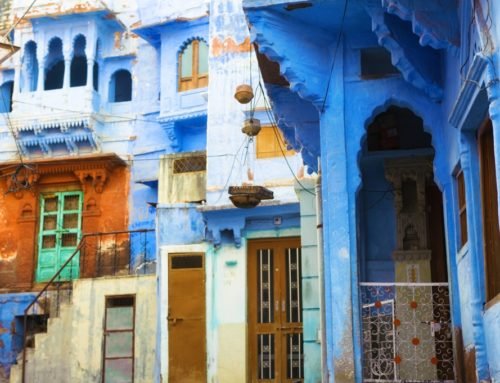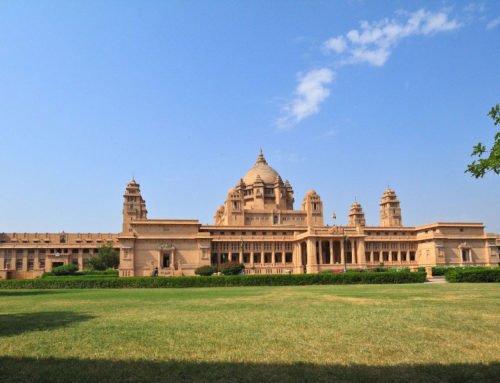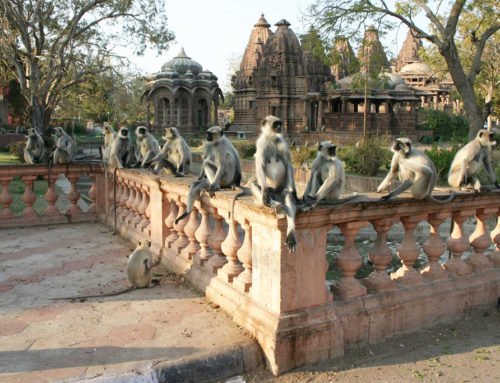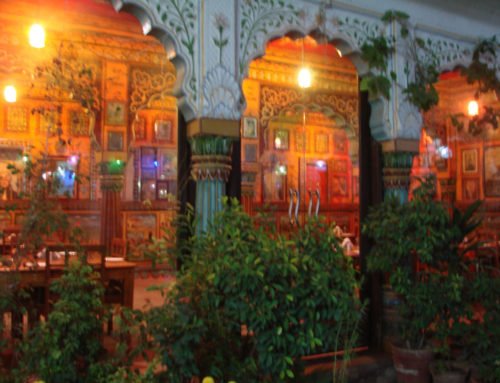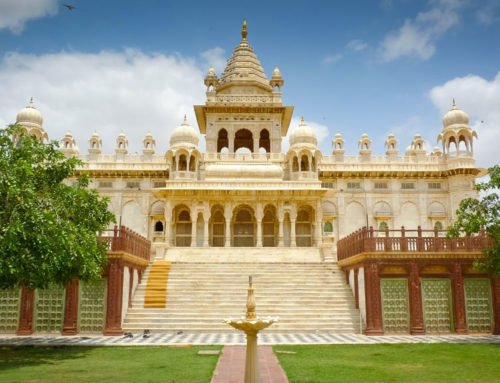Overview
- Signature Dishes: North Indian vegetarian
- Opening Times & Days: 8am to 11pm, daily
- Address: Opposite Toorji ka Jhalra, Makrana Mohalla, Gulab Sagar, Jodhpur, Rajasthan, India
- Contact: 291 261 4615
- Reservation: No
Author Reviews[display_rating_item_results rating_form_id=”3″ rating_entry_ids=”1″ show_category_filter=”false” show_options=”true” result_type=”star_rating” preserve_max_rating=”true” show_title=”false” show_count=”false” ]
Total Rating: [display_rating_result rating_form_id=”3″ show_count=”false” show_rich_snippets=true] [accordions load=”1″] [accordion title=”User Reviews” last] [display_rating_item_results rating_form_id=”5″ show_options=”true” result_type=”star_rating” preserve_max_rating=”true” show_title=”false” show_count=”true” show_rich_snippets=true] [/accordion] [accordion title=”Add Review”][display_rating_form show_email_input=”true” show_comment_textarea=”true” show_name_input=”true” rating_form_id=”5″] [/accordion] [/accordions]
Summary
Hotel Haveli Jodhpur is a centrally located restaurant with decent food, mediocre service and a fantastic view of the fort. With the Mehrangarh Fort on its doorsteps, the view from the rooftop restaurant of this hotel couldn’t get any better.
Hotel Haveli Jodhpur
Hotel Haveli Jodhpur is in one of the taller buildings in central Jodhpur. The owners may have chosen this building for the excellent view of the fort. There isn’t any hotel or restaurant with a better view of Mehrangarh Fort, which looks magnificent when it is lit up at night.
The views from the rooftop restaurant of Hotel Haveli Jodhpur are magnificent to say the least. It is one of the best located rooftop restaurants in Jodhpur. The fort felt so close as if we could reach out and touch it. It was just magical sitting in front of the fort having dinner and enjoying the great view.
[singlepic id=3457 w=720 h=560 float=center]
The tables on the rooftop are basic. The rooftop is quite a large area so the tables are scattered around with plenty of room between them.
The primary reason for sitting on the rooftop is for the view of the fort. Apart from the view, there’s very little in terms of decor. There isn’t much lighting either except for the light from the fort in the distance. There was a lamp near the table we were sitting at but it was broken.
[singlepic id=3459 w=720 h=560 float=center]
The decor in the restaurant downstairs is more amiable. If you don’t really care about the view, there are tables downstairs in a better setting with more light. The tables are decorated with nice table cloth and there is plenty of light to see what you’re eating. There’s also a fountain with jazzy lights which gives it a somewhat romantic setting.
Service here is actually better than many restaurants in India but even then it can take a while to get drinks and food delivered to the rooftop. Service at the rooftop restaurant can be slow as most of the staff is situated in the restaurant below where the kitchen is located. We had to wait for a while before someone came up to the rooftop to get our dinner order. If you want fast and efficient service, consider sitting in the eating area downstairs.
For dinner, we ordered two mains – Dal-Baati-Churma, and Paneer Butter Masala – with the staple bread, Chapattis.
[singlepic id=3460 w=720 h=560 float=center]
Dal-Baai-Churma is a complete dish and very popular in Rajasthan. It’s best enjoyed in winters. It is commonly served at all festivities, including religious occasions, wedding ceremonies, and birthday parties in Rajasthan.
Dal-Baati-Churma is a combination of three different food items – ‘dal’ is made of lentils and can be little bit spicy; ‘baati’ is made from fried or baked wheat flour balls; ‘churma’ is sweetened ground wheat with nuts and raisins.
Baati is a hard, unleavened bread cooked in the desert areas of Rajasthan. It’s prized for its long shelf life and high nutritional content, and in desert areas, for the minimal quantity of water required for its preparation. Baati is always eaten with dal.
Churma is a popular delicacy usually served with baatis and dal. It is coarsely ground wheat crushed and cooked with ghee (clarified butter) and sugar. Traditionally, it is made by mashing up wheat flour baatis or leftover rotis in ghee and jaggery, optionally mixed with dry fruits and nuts. It can be eaten alone or with dal.
Graham liked the dal which was spicy and strongly flavoured. It was nice having the baati broken up and mixed with the dal. The contrasting textures of the baati with the dal were lovely. The churma was sweet but not too sweet. He really liked the texture with the nuts.
It was good to have a combination of dishes that had their own texture and their own mini theme. Although I think this dish was well prepared and each of the elements were very well cooked, it isn’t something that might appeal to western tastes.
[singlepic id=3458 w=720 h=560 float=center]
Paneer Butter Masala is a popular North Indian vegetarian dish and one of the most popular paneer recipes in Indian cuisine. Butter Chicken is the most popular gravy both in India and overseas, and while it’s a treat for non vegetarians, Paneer butter masala is prepared on similar lines and is definitely the king of dishes for vegetarians.
The near perfect combination of spiciness and creaminess of its gravy makes it simply irresistible and versatile to be served with any Indian bread. It can be served with tandoori roti, naan, kulcha or with steamed rice.
The paneer butter masala we had at Hotel Haveli Jodhpur was quite average. We like the paneer fried, but the paneer in this dish wasn’t which made it soggy. The sauce was really nice – creamy and spicy – and went nicely with the chapattis.
Overall, the food was decent, good value, and it didn’t detract from the view.



